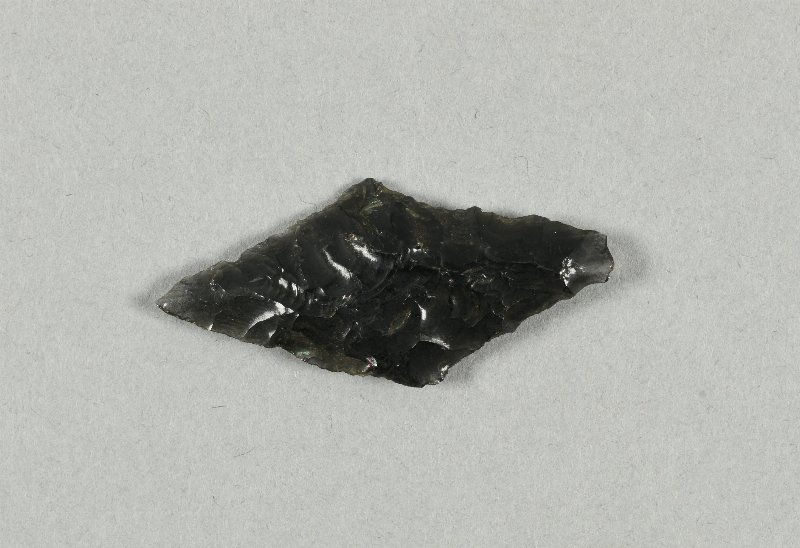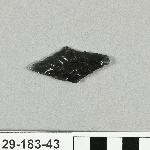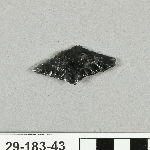Point
Arrowhead
29-183-43
From: Japan | Hokkaido | Uragawa | Uragawa Hill
Curatorial Section: Asian
| Object Number | 29-183-43 |
| Current Location | Collections Storage |
| Culture | Late Paleolithic (uncertain) | Jomon (uncertain) | Neolithic (uncertain) | Yayoi (uncertain) | Japanese |
| Provenience | Japan | Hokkaido | Uragawa | Uragawa Hill |
| Period | Late Paleolithic (uncertain) | Jomon (uncertain) | Yayoi (uncertain) |
| Date Made | 12,000 BCE - Yayoi Perod |
| Section | Asian |
| Materials | Obsidian |
| Technique | Flaked |
| Description | Point or arrowhead. Flaked bifacially retouched stone tool made of black obsidian. Diamond shaped. Translucent with parallel non-translucent streaking running length of point. Tip broken off. Arrowheads were used during the Late Paleolithic age and continued to be used during the Yayoi period. They appear in sites throughout Japan. Their use as hunting and fishing implements is clear through their discovery hafted onto shafts and harpoons in archaeological contexts. 29-183-43 is much like 13202 in form including a slight lop-sidedness. 13202 is rounded and slightly larger in size while 29-183-43's edges are thinner and finer. These minor differences can easily be accounted for as being made by a different hand but both are made using the same techniques and are part of the same lithic tradition. Diamond shaped bifacially retouched points or arrowheads appear at Paleolithic sites such as Uenodaira, Nagano Prefecture in central Honshu which dates 12,000 - 10,000 B.C. On the other hand this type is also found in Yayoi Yayoi contexts such as at Uriyudo, Osaka Prefecture in south-central Honshu. Inevitably 29-183-43 is evidence of an arrowhead form which continued being used over a long period of time. |
| Length | 5.1 cm |
| Width | 2.5 cm |
| Thickness | 0.6 cm |
| Credit Line | Received from various sources, pre-1929 |
| Other Number | None - Field No SF |
Report problems and issues to digitalmedia@pennmuseum.org.




